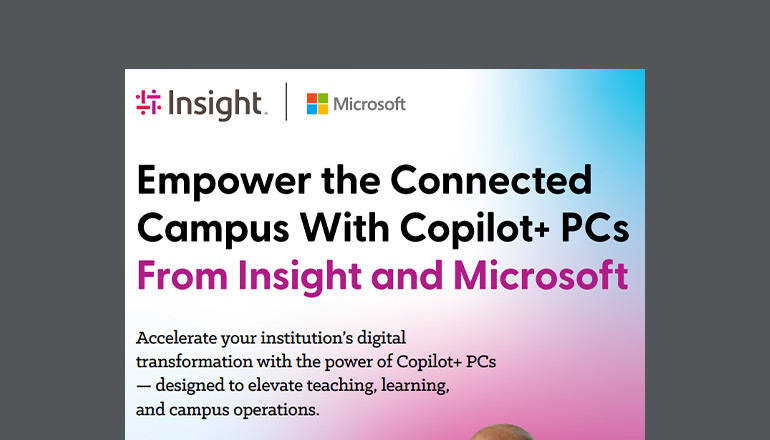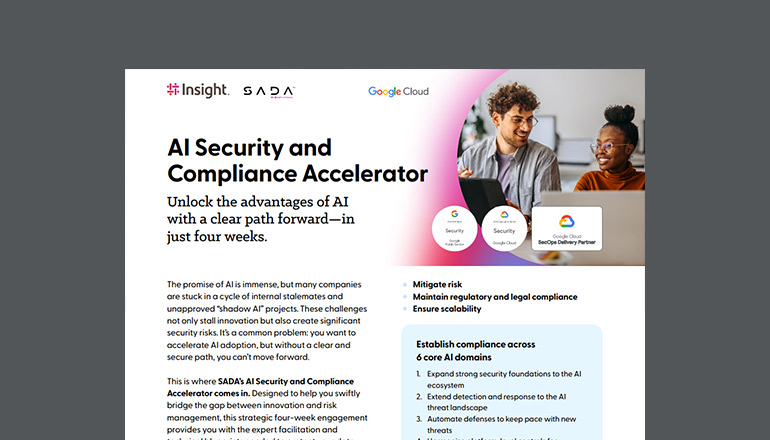Article Top Considerations for Higher Education IT as Remote Learning Grows
By considering a few important IT components and leveraging digital technology solutions, universities can create a powerful learning experience for students.
By Insight Editor / 1 Aug 2020 / Topics: Artificial Intelligence (AI) Modern infrastructure Cybersecurity

As thousands of students flock to college campuses for the start of another academic year, it would be an understatement to say this year’s return to school will look a little different.
With universities shutting down campus operations and rolling out remote learning at record speed in the spring, colleges have proven they can adapt to new circumstances. However, they face many unique challenges — from residence halls and dining facilities to athletic events — that will make this fall unlike any other.
Higher education institutions are under a lot of pressure to get it right. Enthusiastic students want to make the most of their college experience and staff need to feel comfortable with digital teaching tools. Universities are expected to step up their IT operations to provide students with the best learning experience possible.
Colleges will inevitably face challenges when shifting to remote operations, but online learning can be just as effective as in-person classes with proper planning — and in some cases even more effective.
Ramping up security
Privacy and security should be a topic on every college’s agenda as lectures turn into videos and students turn on their webcams. The quick rollout of distance learning has brought many questions to the forefront surrounding the safe use of student data — and how universities can prevent it from getting into the wrong hands.
Online learning opens doors to a world of cybersecurity risks, including malware attacks, data breaches and even unwelcome intruders on live lectures. Universities are held to a high standard to safeguard sensitive student and faculty data from the increasing number of cybersecurity threats faced as a result of online classrooms.
Investing in cybersecurity solutions can help ease the minds of students and staff — including providing adequate training on how to recognize threats. While universities may have cybersecurity software in place, online schooling creates unique vulnerabilities that require new considerations. It would be wise to audit existing cybersecurity programs to ensure your university has the proper protections.
Expanding remote technical support
After making sure students and staff are equipped with the devices they need for successful remote schooling, it’s equally important to make sure they are functioning properly. While digital technology makes online learning possible, it is not without fail. Laptops break and need repair, online platforms experience glitches and internet connections waiver — especially for those with low bandwidth in the first place.
While many universities offer IT services on site, expanding this resource beyond campus walls is vital for successful distance learning. Students shouldn’t have to worry about falling behind in class because of technology troubles, and technical difficulties for an instructor could prevent class from occurring.
Remote IT services allow students and staff to get the on-demand support they need to facilitate a productive learning environment. A fully equipped remote IT staff to assist students and faculty can minimize technology concerns quickly and effectively.
Strengthening IT infrastructure
Even universities that welcome students on campus are opting for a hybrid learning approach through a combination of in-person and remote classes. This means campus networking and connectivity will need to support an increase in video streaming and time spent online.
Slow and unreliable Wi-Fi can be a significant roadblock to successful virtual learning. Buffering videos and crashing webpages can be frustrating and prevent students from having an effective learning experience. Now, more than ever, college campuses have a need for fast, dependable Wi-Fi that can support the growing demands of a changing classroom experience.
A new way of learning
The transition to online learning will inevitably have its challenges, and no one expects the transition to be flawless. While there is no one-size-fits-all solution, devoting time and resources to areas of concern can make a substantial difference in the effectiveness of online classes and create a dynamic learning environment.






